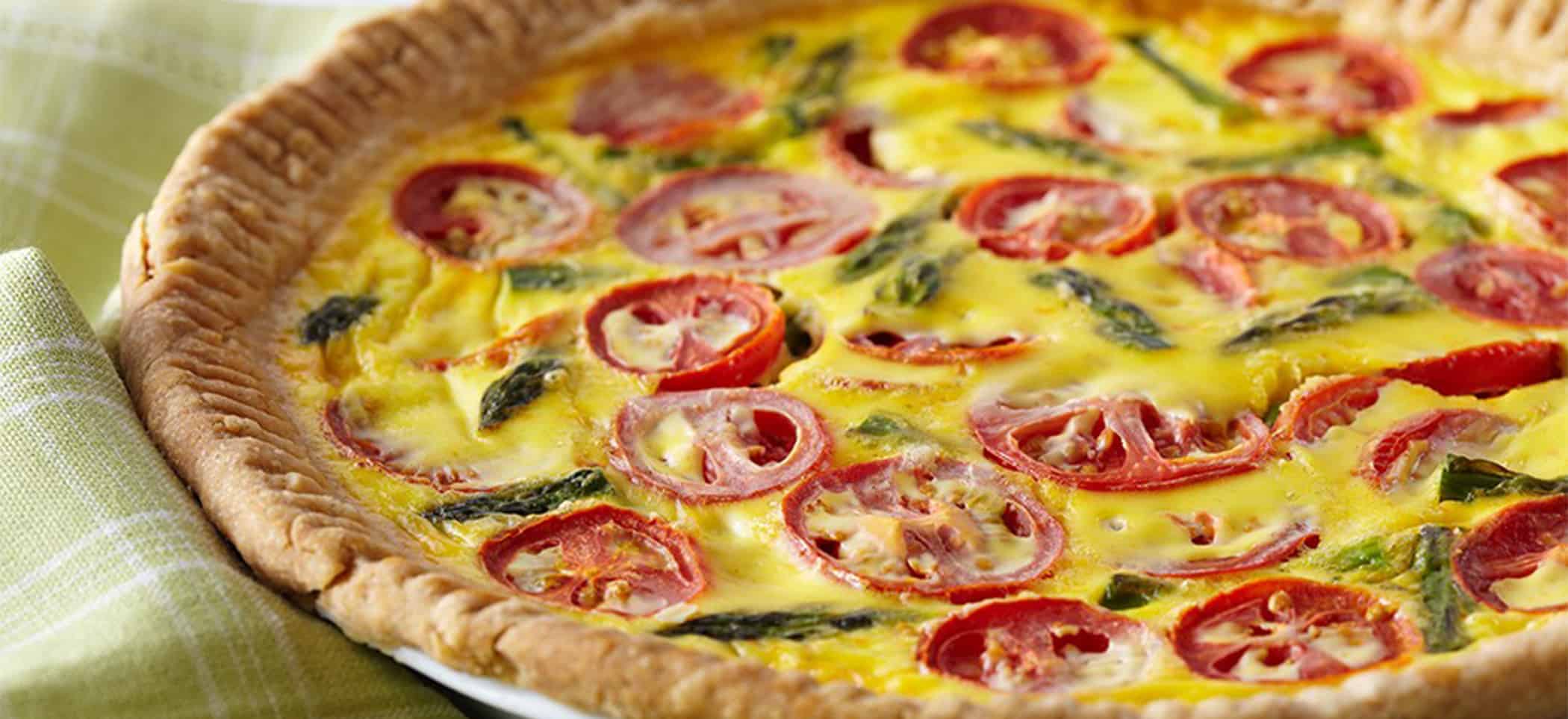

-
55M Total Time
-
15M Prep Time
-
10 Ingredients
-
6 Servings
Directions
PREHEAT oven to 375°F.
In a large saucepan ADD 6 cups water, salt and asparagus and bring to a boil for 1 minute. REMOVE from stove and place asparagus in a bowl filled with ice water to stop the cooking process. DRAIN well.
SPRINKLE cheese evenly in bottom of piecrust. TOP with asparagus and tomatoes in an even layer.
BEAT eggs, milk, sour cream, salt and pepper in medium bowl until blended. Carefully POUR over filling in piecrust.
BAKE in center of 375°F oven until center is almost set but jiggles slightly when dish is gently shaken and knife inserted near center comes out clean, about 40 minutes. LET STAND 5 minutes. CUT into wedges.
Ingredients
- 6 large EGGS
- 1 basic piecrust (9-inch), baked
- 1 cup asparagus pieces (1-inch)
- 1/4 tsp. salt
- 3/4 cup shredded Italian cheese blend (3 oz.)
- 1 cup cherry tomato slices
- 1/2 cup milk
- 1/3 cup sour cream
- 1/2 tsp. salt
- 1/4 tsp. white pepper
Tips
Prepare in mini pie pans (or ramekins) for individual servings or for a convenient on-the-go snack.
If using frozen piecrust, choose the deep-dish size. Always bake your pie shell first to avoid a soggy crust.
No water bath needed. The pie crust protects the custard filling from direct oven heat, so a water bath is not necessary.
For richer custard, substitute half-and-half for the milk.
This recipe is an excellent source of protein and choline, and a good source of folate.
How to tell if it’s done. Baked custards should be removed from the oven before the center is completely set. The center will jiggle slightly when dish is gently shaken. Custard will continue to “cook” after it’s removed and center will firm up quickly. Overbaked custard may curdle.
The knife test: Test for doneness with a thin-bladed knife. Insert knife about 1 inch from the center of a one-dish custard; midway between center and edge. If knife is clean when pulled out, the custard is done. If any custard clings to the blade, bake a few minutes longer and test again.
Cheese fillings: Quiche fillings containing cheese may continue to test “wet” even after they are done. Tap or gently shake the dish; remove quiche from oven when the center is almost set but still jiggles a bit.
Per serving: 1/6 of recipe
- Calories 310
- Total fat 20 g
- Saturated fat 8 g
- Polyunsaturated fat 2 g
- Monounsaturated fat 6 g
- Cholesterol 206 mg
- Sodium 510 mg
- Carbohydrates 21 g
- Fiber 2 g
- Sugar 4 g
- Protein 13 g
- Vitamin A 122 mcg
- Vitamin D 1 mcg
- Folate 56 mcg
- Choline 160 mg
- Calcium 177 mg
- Iron 2 mg
- Potassium 246 mg
To ensure food safety, eggs should be cooked until both the yolk and the white are firm. Consuming raw or undercooked eggs may increase your risk of foodborne illness, especially for those with certain medical conditions. For recipes that call for eggs that are raw or undercooked when the dish is served, use either pasteurized shell eggs that have been treated to destroy Salmonella, or use pasteurized egg products.




